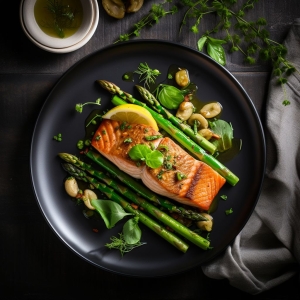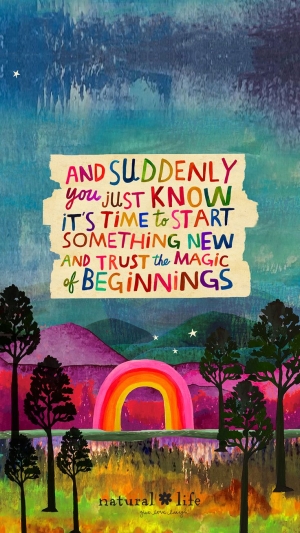
yogalign.co.nz admin
Self Awareness
“To be aware of a single shortcoming within oneself is more useful than to be aware of a thousand in somebody else.”
H.H. Tenzin Gyatso, the XIV Dalai Lama of Tibet
4 Supplements I'm Getting My Ageing Parents To Take
1. Creatine
2. Omega-3s
3. Vitamin D3 & K2
4. Magnesium Glycinate
Here's why ...
1. Creatine isn't just for gym bros, it's for longevity.
It helps preserve muscle & strength, which declines 3-8% every decade after 30.
It also boosts brain energy & may protect against depression & cognitive decline.
2. Omega-3s
Fish oil is brain & heart insurance.
EPA + DHA lowers inflammation, improves blood flow, supports memory, & protects against heart disease.
Most older adults don't get enough through diet, & when paired with the next supplement, it has been shown to reduce biological ageing.
3. Vitamin D3 + K2
As we age, our ability to synthesise vitamin D from sunlight drops. D3 supports immunity, muscle strength, & bone health.
Pairing it with K2 ensures calcium goes into the bones, not arteries. This combo helps prevent fractures & heart disease.
4. Magnesium Glycinate
Magnesium powers 300+ reactions in the body, including sleep quality, muscle recovery, & heart rhythm.
The glycinate form is gentle on the stomach & calming for the nervous system, making it perfect for ageing parents who want deep, restorative rest.
Other supplements I'd consider:
Multi-vitamin for nutrient insurance
L-theanine for mood & stress relief
CoQ10 supports heart health & energy
Glycine improves sleep & supports collagen
Supplements aren't mandatory, but they help, especially if you're not getting enough through natural means.
Dan Founder - Fitness Coach
Add a pinch of Himalayan salt & a squeeze of lemon to your water
Why?
Sleep is the longest period you go without drinking, so hydrating upon waking helps flush out toxins & rehydrate every cell. (avoid table salt for best results)
Are you dehydrated?
Drinking more water doesn't necessarily mean better hydration. Without electrolytes, most of that water never makes it into your cells, where it's needed the most.
Electrolytes are electrically charged minerals (sodium, potassium, magnesium) that enable fluid transport, muscle function, & brain signalling. Think of them as the "currency" that moves water into & out of cells.
Why do we need electrolytes?
Studies show that even mild dehydration (1-2% body weight loss) can impact mood, memory & concentration. Electrolytes stabilise brain cell communication, critical for mental sharpness & reducing mental fatigue.
Take a look at what each mineral alone does for your health:
Sodium: Sodium is a primary driver of water balance across cell membranes. It acts as the "gatekeeper" of hydration, pulling water into cells for optimal cellular health & preventing dehydration.
Potassium: Potassium works inside cells to balance sodium, aiding nerve impulse transmission & muscle contraction. It's essential for muscle relaxation & regulating heart rhythm, reducing risk of muscle cramps & irregular heartbeats.
Magnesium: Magnesium modulates nervous system responses & supports energy production. In states of high stress or intense physical activity, magnesium is rapidly depleted - body & mind fatigued.
Add these to your diet to support natural hydration:
- Sodium: Pink Himalayan salt
- Potassium: Bananas, avocados, sweet potatoes
- Magnesium: Almonds, pumpkin seeds, leafy greens
Sodium, Potassium & Magnesium work together to regulate water balance, support nerve & muscle function, & even sharpen cognitive processes. When these vital minerals are in sync, they empower your body to perform at its best - boosting energy, mental clarity & resilience against stress.
Dr Mark Hyman MD
Behaviour As Medicine
Discipline isn't restrictive - it's freedom in disguise.
Choosing real food.
Moving your body.
Saying no to the things that don't serve you.
Health is built on discipline, and freedom is the reward.
Dr Mark Hyman MD
Call 0274 96 96 33 for a free 15 minute Strategy Session, if you need support & accountability while integrating health & well-being changes into your lifestyle.
The 7 Levers and Breaking the Cycle of Depression
The symptoms of depression can bring about some drastic changes in our daily lives, routines, and our behaviour. Often it is these changes that makes the depression worse and prevents us from getting better.
When we stop doing stuff we feel even less motivated and more lethargic. When we don't do the things we used to love, we miss out on experiencing pleasant feelings and positive experiences. Often this means our depression gets worse.
Then we start not doing important tasks and responsibilities at work or at home, the list can begin to pile up. It is common to feel overwhelmed when we think about the things we have to do. This may result in us feeling ashamed or thinking we are a failure. This is the cycle of low mood that plays a prominent role in depression.
We have to act against depression. Physically do things and change our behaviour even when it is hard and not what we feel like doing. When we act against depression we prevent low energy and fatigue. This may help to break the cycle of depression.
The first 6 levers that we teach you in this program are all about acting against depression and low mood. Those levers are:
- Eating better to feel good and have more energy
- Exercising each day
- Going to bed and getting up at the same time each day
- Breathing through our nose in times of stress and anxiety
- Getting into cold water.
- Hunting out moments of joy each day
We also have to think against depression. Lever 7 is where we focus on thinking against depression.
7. Recognising (and then stopping) negative self-talk and rumination.
An important note for cheerleaders/supporters
Are you a parent, family member, friend or work colleague of someone who is currently suffering from depression and/or mental ill-health? If so, be mindful that although 'acting against depression' may seem straight forward and easy from where you are sitting, it is not. In fact, it can be incredibly difficult and the deeper the depression the harder it becomes to act. This program is not about simply saying to someone...'you need to eat better', 'just go for a run', and so forth, but rather we are teaching the science of why and how these levers work and then working to establish some healthy habits that, once established, will assist individuals suffering from depression to break the cycle, or at least stop the spiral downwards.
If you feel you need support with your lifestyle changes, see the Health Coaching Tab on the Home page for details.
Self Care
Imagining Your Success Can Make It A Reality
How to Use Visualisation to Be More Successful
Your brain is an adaptable organ, capable of forming new connections and pathways - a phenomenon known as neuroplasticity.
There are lots on mechanisms at play, but by visualising you're essentially priming your brain for success and making this a more comfortable pathway for your brain.
A study on basketball players found that mental imagery training helped players improve their free-throw performance.
Here's how to do it effectively:
1. Be Specific: Imagine your goal with clarity - what it looks, feels, and sounds like.
2. Engage Your Senses: Include sensory details to make the mental image vivid and believable.
3. Visualise Daily: Consistency strengthens neural pathways and keeps you focused on your goal.
4. Pair It With Action: Visualisation sets the mental stage, but taking tangible steps is what turns dreams into reality.
Visualisation is simply creating a mental image of a future event. Think of it as a mental rehearsal.
Just like a real rehearsal - the more you mentally rehearse, the better you get.
When you visualise an action or outcome, your brain activates similar neural patterns as if you were actually doing the activity. Studies using fMRI scans actually show that imagining practicing a skill (like playing the piano) activates the motor cortex just like actual practice does.
It can physically change your brain and improve its performance.
This is how it works ...
Neuroplasticity - When you visualise success, you reshape the physical structure of your brain, strengthening pathways associated with that outcome. This makes the brain more efficient at executing the behaviours tied to achieving your goal.
Neural Priming - By visualising, you essentially "practice" the desired behaviour or outcome, which primes your brain to respond appropriately when you're in a real situation. It creates mental readiness and alignment with the actions needed to succeed.
Mirror Neurons - These neurons activate both when you perform an action and when you observe or imagine it, reinforcing learning and confidence.
Positive Feedback Loop - Seeing yourself succeed fosters motivation and reduces performance anxiety, setting the stage for better results.
by Dr Tara Swart - Neuroscientist
The Magic of Beginnings
How to stick to your 2025 resolutions - Mark Hyman MD
80% of New Year's resolutions fail by February.
The problem isn't a lack of willpower - it's understanding how your brain & body are wired for change.
Most resolutions fail because they don't align with how our brains work.
Vague Goals confuse your brain.
Unrealistic expectations lead to overwhelm.
All-or-nothing thinking sets you up for failure.
To succeed, you need to work with your biology, not against it.
Your brain loves efficiency - which means it resists change.
Habits are wired into the basal ganglia, the brain's autopilot system.
When you try to change too much at once, the prefrontal cortex (the decision-making part of your brain) gets overwhelmed.
Without quick wins or reinforcement, your brain defaults to old patterns.
The solution is to leverage neuroplasticity - your brain's ability to rewire itself.
Set SMART Goals:
Goals need to be brain-friendly.
Instead of vague resolutions, use the SMART framework:
Specific: Be clear about what you want to achieve.
Measurable: Quantify progress (eg steps, workouts, meals prepped).
Achievable: Start with small, manageable changes.
Relevant: Align with your deeper "Why".
Time-bound: Add a deadline to create urgency.
Example: Instead of "I'll get healthy", say "I'll walk for 20 minutes, 3 times a week by February".
Focus on systems:
Goals are the destination; systems are the path. Your body & mind thrive on routine.
Goal: Lose 5kgs.
System: Plan 5 balanced meals weekly, schedule workouts, & track progress daily.
Focus on creating habits that feel effortless over time - like meal prepping or morning meditation.
Reward the brain:
Your brain runs on dopamine, the "feel good" neurotransmitter.
Set small, achievable milestones to trigger dopamine release.
Celebrate every win - like hitting your first week of consistent workouts.
Avoid punishing slip-ups. Instead, refocus on what's next.
This keeps your brain engaged & motivated for the long haul.
Build accountability:
You're more likely to succeed when someone's watching.
Share your goals with a friend, health coach or join a supportive community.
Use tools like habit trackers or apps to visually monitor your progress.
Check in weekly to reflect on wins & adjust for challenges.
When others are involved, you strengthen the neural pathways that reinforce positive change.
Understand your "Why".
Research shows that connecting your goals to a deeper purpose improves success.
Do you want to feel energised to play with your kids?
Avoid chronic disease?
Show up as your best self for work & relationships?
Your "Why" anchors you when your motivations fades.
Be in the 20% that Succeed!
This year, set goals that stick by working with your brain & biology.
Start small.
Celebrate progress.
Focus on systems over perfection.
Dr Mark Hyman
Cholesterol Update
Timeline of cholesterol research
Australian clinical pathologist Professor Ken Sikaris outlines the timeline cholesterol research has followed:
30 years ago
High cholesterol was thought to be a problem, while triglycerides were unimportant. It turns out that in some populations, low total cholesterol is actually a health risk.[65]
20 years ago
We understood that the two cholesterols that made up the total cholesterol (LDL-C and HDL-C) might have different effects. LDL-C was named ‘bad cholesterol’, as it was associated with increased poor health, and HDL-C ‘good cholesterol’ for the opposite reason.
• We now know that this is a simplistic picture: saturated fat increases both LDL-C and HDL-C, but has a differential effect on the size of the particles within LDL-C. Scientists also became aware that very-low-density LDL-C (VLDL) and oxidised LDL-C were likely to be markers of metabolic health.
• We also know that high levels of total cholesterol and LDL-C have been shown to be protective, not harmful, in some older populations.[66]
10 years ago
We developed a more nuanced understanding of LDL-C.
• The particle size of LDL-C can roughly be understood in terms of small dense particles (apolipoprotein B, or ApoB) that are potentially harmful to health, and large fluffy particles (apolipoprotein A, or ApoA) that are not thought to be part of the disease process.
• Trying to measure these in the blood requires an advanced biochemistry lab and is not standard (or even possible) in most pathology labs. While we know that it is better to measure ApoB and ApoA, we can’t measure them easily so are stuck with the LDL-C and HDL-C numbers for now.
Today
We now understand that the combination of fasting triglycerides and HDL-C (both usually measured in your standard blood test) is a good measure of ApoA/ApoB levels.[67]
• Low triglycerides are correlated with less ApoB and more ApoA, so a low triglyceride level predicts a better profile. Higher HDL-C levels are also correlated with less ApoB and more ApoA. These two correlations are independent of each other, so combining the TG and HDL-C numbers together gives an even better picture. A good level for the TG/ HDL-C ratio is less than 0.9 if measured in mmol/L or less than 2.0 if measured in mg/dL.
• The actual number of LDL particles can now be measured by LDL-P (LDL particle number). Low LDL-P is a much stronger predictor of low health risk than low LDL-C, probably because the higher particle number means more chance of oxidation (oxidised LDL is bad). Low-carb diets reduce LDL-P, while high-carb diets increase it.
©PreKure 2019 | http://prekure.com
Contact Leonie Main
m: +64 (0) 274 96 96 33
19B Golf Road, Mount Maunganui 3116, New Zealand
Facebook: Gypset Life














